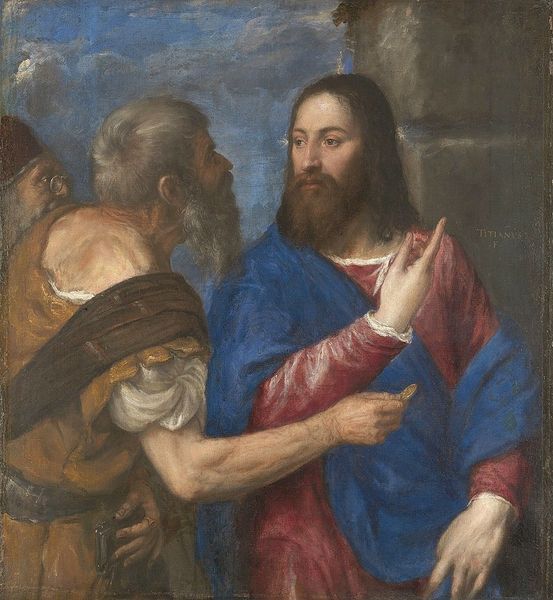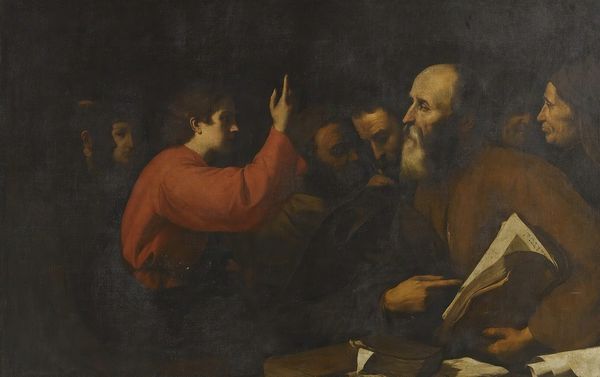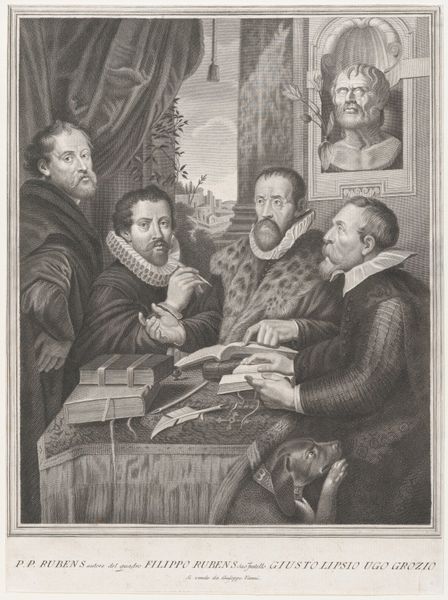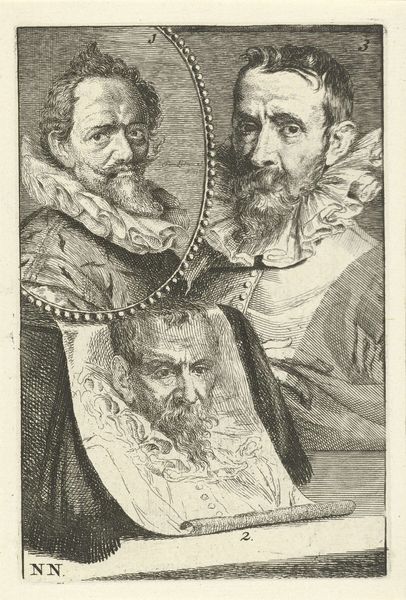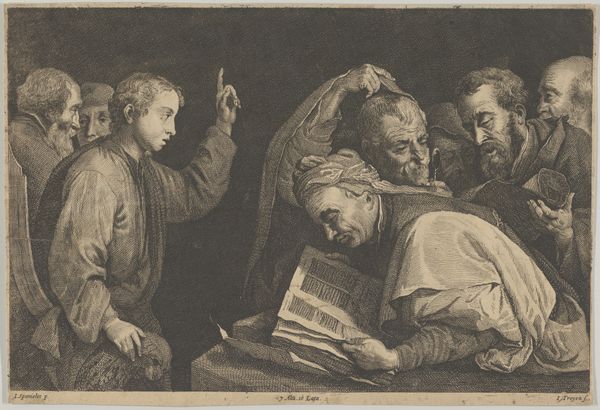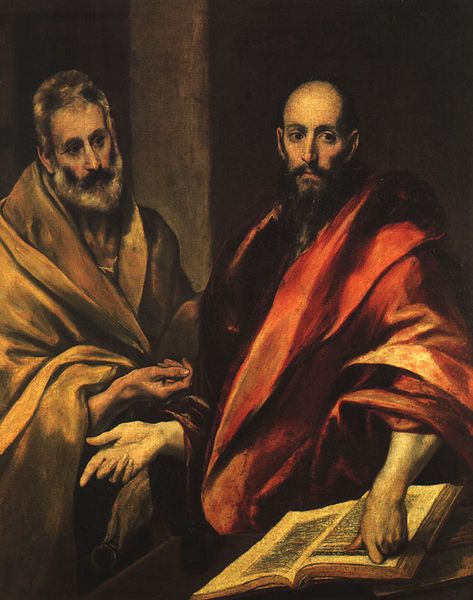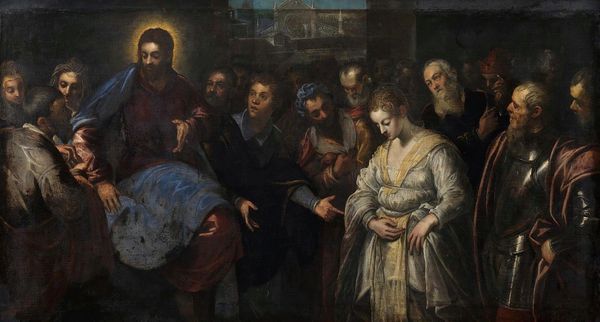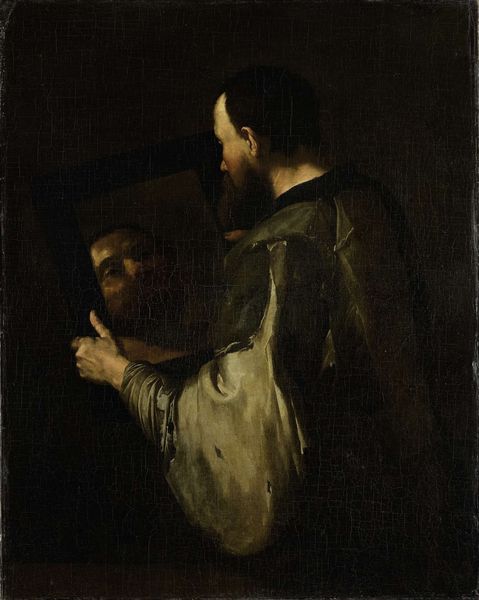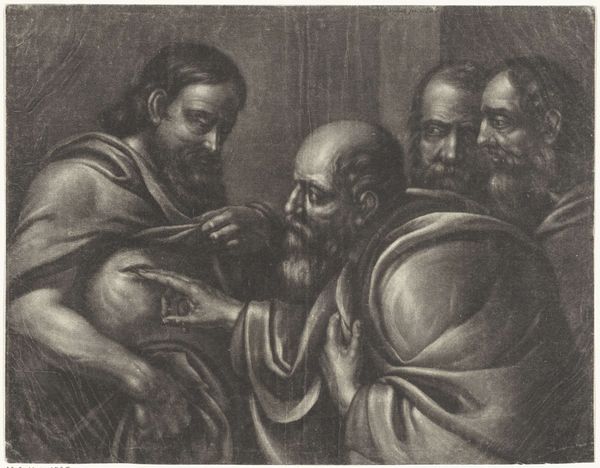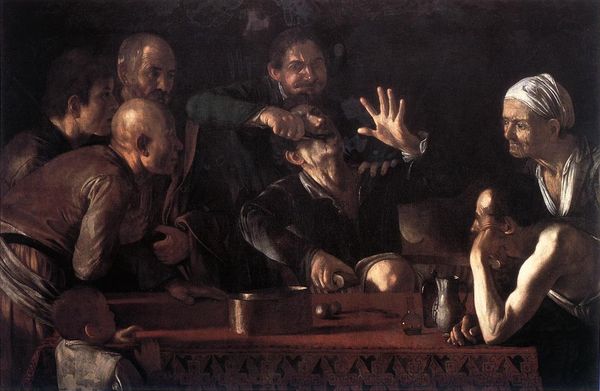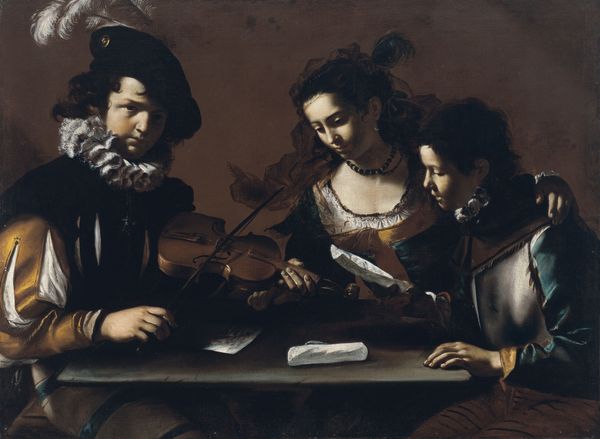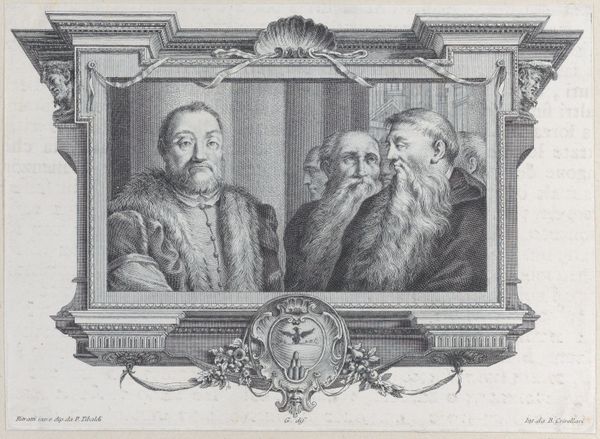
painting, oil-paint
#
portrait
#
painting
#
oil-paint
#
11_renaissance
#
group-portraits
#
academic-art
#
italian-renaissance
#
realism
Dimensions: 25 x 32 cm
Copyright: Public domain
Curator: This work gives us pause—it's the "Portrait of Annibale, Ludovico and Agostino Carracci". The medium is oil on canvas and its artistic origins stem from Italian Renaissance portraiture. What strikes you initially? Editor: Dark, undoubtedly. The subdued palette contributes to the sober expressions of the sitters; their garb is uniformly black, punctuated only by those meticulously rendered white ruffs and cuffs. I wonder, what determined the selection of such austere material for their attire? Curator: Beyond simple taste, their clothes speak to a period of social change. Those high, ruffled collars might indicate status, while the overall seriousness of the painting links to ideas about humanism and learning gaining importance then. Consider how they want to be seen. Editor: Materially speaking, oil paint lends itself beautifully to realism and the details of the furs and skin. You can see the layering, and even imagine the artist's gestures, brushstrokes that bring skin, textiles, and character to life. Were the Carracci concerned with the rise of printed portraits and engravings, anxious to ensure their continued influence through painting? Curator: Certainly, printmaking’s democratization of imagery was a consideration for artists like the Carracci, particularly concerning control over their legacy. Each pose also projects different temperaments that hint at the varying personalities within the family dynamic. Note the central figure; that hand-on-chest gesture—a statement of intent perhaps. Editor: The composition seems intriguing. Given that this is a portrait of three individuals, what kind of artistic division of labor went into this image, literally? How do different forms of craft practice intersect here, in both process and reception? Curator: That's a great question, because while the artwork speaks of skill and representation, it also quietly embodies the intellectual concerns of its time. The very arrangement—those figures peering out as if confronting the viewer—was surely intentional, crafted to resonate with those humanist ideals we touched upon. Editor: Ultimately, for me, the material and method take center stage—reminding us that image-making is always linked to a specific time and place. These weren't ethereal gods floating in an undefined heaven, these were grounded makers shaping visual culture and grappling for recognition. Curator: Yes, looking closely we understand art wasn't divorced from philosophical issues or social considerations, but actually an active participant.
Comments
No comments
Be the first to comment and join the conversation on the ultimate creative platform.
